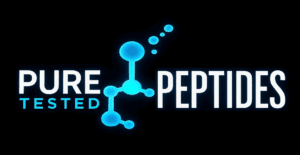Mitochondrial & Longevity: MOTS-c, SS-31, Epithalon, and NAD+ Pathways
Research-Only: Laboratory use; not for human consumption.
MOTS-c. The mitochondrial-derived peptide MOTS-c regulates metabolic homeostasis through folate–AICAR–AMPK signaling and skeletal muscle targeting in preclinical models (PMID: 25738459; PMC: PMC4350682; PMC: PMC9905433).
SS-31 (Elamipretide). This tetrapeptide concentrates at the inner mitochondrial membrane via cardiolipin affinity, stabilizing cristae, improving redox balance, and supporting ATP output; protein interaction landscapes and functional studies corroborate mitochondrial targeting (PMID: 32554501; PMC: PMC7334473; PMC: PMC6588449).
Epithalon. AEDG tetrapeptide literature describes telomerase activation and telomere length changes in somatic cell culture, with additional reports on neural and retinal gene expression programs (PMID: 12937682; PMC: PMC7037223).
NAD+ Axis. Reviews synthesize sirtuin biology and NAD+ metabolism as central to cellular stress responses, mitochondrial homeostasis, and transcriptional regulation (PMC: PMC6206880; PMC: PMC7963035; PubMed: 30355082). Browse the full catalog.

Methodological Notes. To contextualize mechanistic observations, laboratories typically
report experimental temperature, buffer composition, biological replicates, and blinding/randomization
practices for image analysis and Western quantification. Where possible, orthogonal corroboration is
included: for example, receptor pharmacology by radioligand binding or BRET assays combined with
downstream second messengers; structural endpoints by both live-cell imaging and fixed immunostaining;
and bioenergetics readouts by oxygen consumption/ECAR coupled to targeted metabolomics. These practices
increase reproducibility and allow meaningful comparison across peptide classes and batches in research-only
settings (PMC: PMC7350483).
Statistics & Reporting. Typical analyses include power calculations, pre-registered endpoints,
and multiple-comparisons adjustments for families of tests. Effect-size reporting (Cohen’s d or Hedges’ g),
confidence intervals, and transparent outlier policies enable precise interpretation of receptor- or
mitochondria-targeted peptide experiments. Collectively, these design elements improve the signal-to-noise
ratio in bench studies and inform subsequent assay selection. Browse the full catalog.
